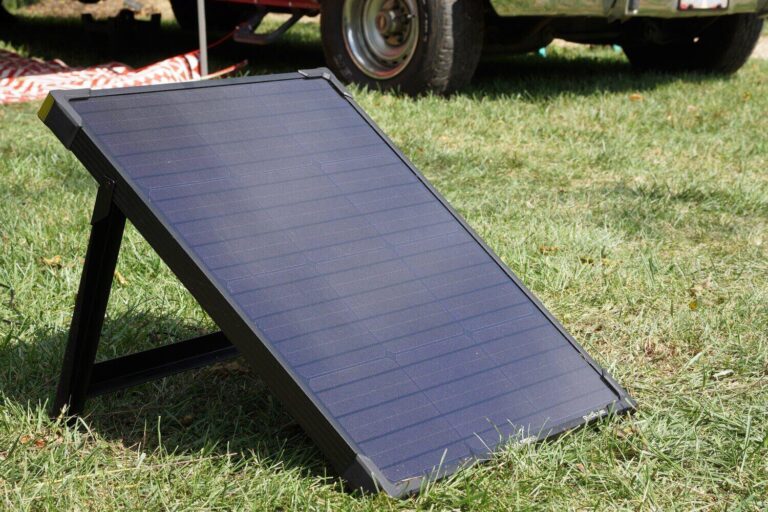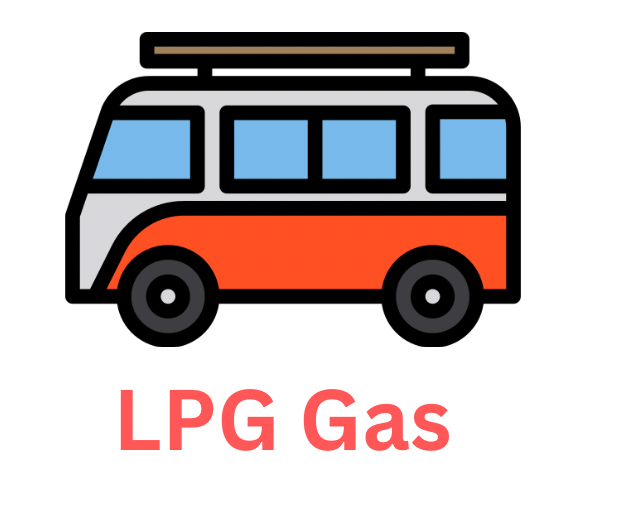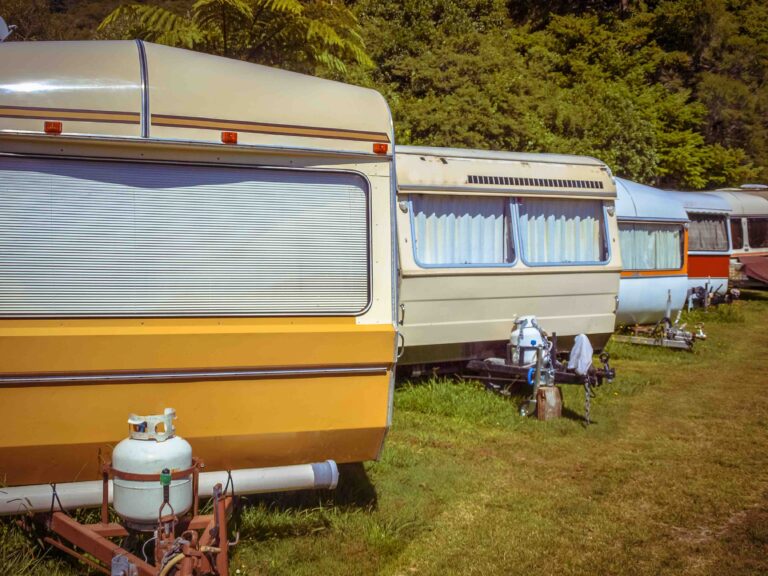Electric Campervans/ A Guide to Exploring the Future
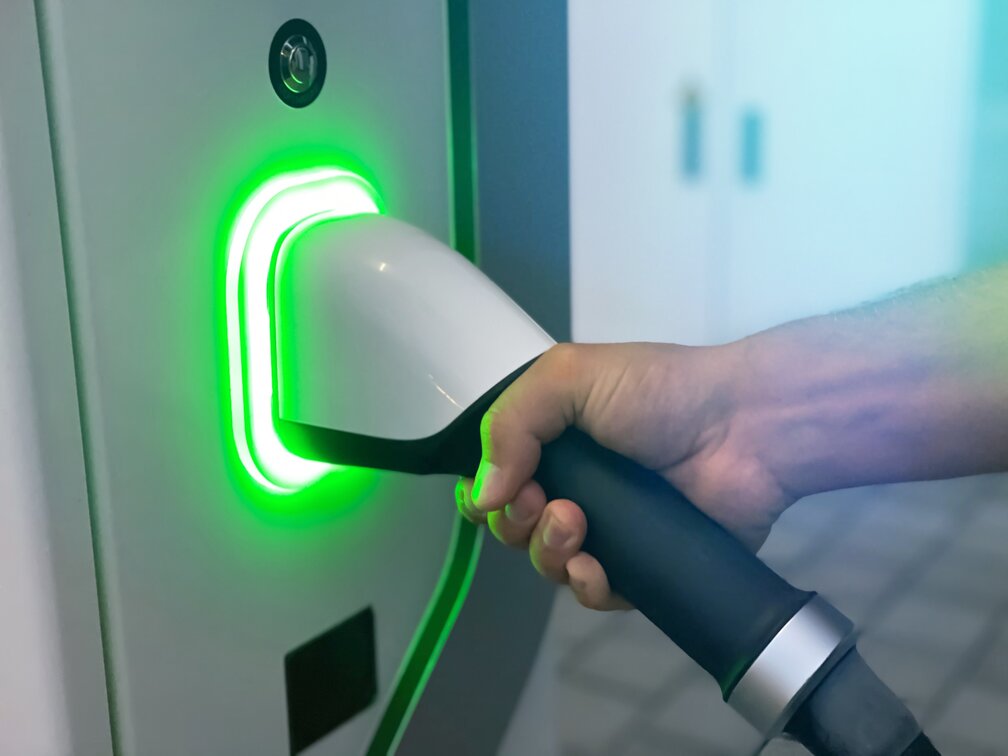
What is an Electric Campervan?
An electric campervan is a type of recreational vehicle that is powered by electricity instead of traditional fuel sources such as gasoline or diesel.
It utilizes an electric motor and battery system to provide the necessary power for driving and operating various onboard amenities. These campervans offer a more environmentally friendly alternative to conventional vehicles as they produce zero emissions while in use.
They can be charged from regular electrical outlets or dedicated charging stations, and some models even have the ability to generate electricity through solar panels installed on the roof. Electric campervans are becoming increasingly popular among eco-conscious travelers who want to minimize their carbon footprint while still enjoying the freedom and convenience of a campervan lifestyle.
They provide a quiet and smooth driving experience, and their range is continuously improving with advancements in battery technology. With the growing infrastructure of charging stations, electric campervans are a practical and sustainable option for those who enjoy exploring the great outdoors while minimizing the impact on the environment.
Be sure to watch the videos in this guide and if you like the content please subscribe to the channels Thanks.
The Future of Electric Campervans

Technological Advancements
Technological advancements are constantly on the horizon, promising to revolutionize various aspects of our lives.
One such advancement is the development of autonomous vehicles. With companies like Tesla and Google already testing self-driving cars, we are on the verge of a transportation revolution. These vehicles have the potential to greatly reduce traffic congestion, carbon emissions, and accidents caused by human error. Additionally, the internet of things (IoT) is set to transform our homes into smart living spaces.
Imagine a home where all your appliances are connected, allowing you to control them with a single app. This level of connectivity can increase efficiency and convenience in our daily lives. Another exciting advancement is the rise of virtual reality (VR) and augmented reality (AR).
These technologies have the potential to change the way we experience entertainment, education, and even healthcare. With every passing year, new technological breakthroughs are being made, bringing us closer to a future we had only dreamed of.
The Rise of Electric Mobility.
In recent years, there has been a significant rise in the popularity of electric mobility. This can be attributed to a number of factors. First and foremost, there has been a growing consciousness regarding the environmental impact of traditional vehicles that run on fossil fuels.
Electric vehicles (EVs) are seen as a clean and sustainable alternative to petrol and diesel cars. Additionally, advancements in technology have made EVs more efficient and affordable. The cost of batteries, which is often considered one of the main barriers to widespread adoption of electric mobility, has been steadily decreasing.
Furthermore, governments around the world are introducing policies and incentives to promote the use of electric vehicles. This includes subsidies, tax breaks, and infrastructure development for charging stations. The rise of electric mobility is not only transforming the automotive industry but also contributing towards a greener and more sustainable future.
As more people recognize the benefits of electric vehicles, the demand for them is expected to continue to rise in the coming years.
Solar Power Integration
One of the most promising avenues for achieving self-sustainability in electric campervans is through advancements in solar power integration. The adoption of solar panels on campervan roofs holds immense potential for generating clean energy while on the road or parked at a campsite.
Solar panels can convert sunlight into electricity that can be stored in the campervan’s battery system or used directly to power onboard appliances and systems. This integration not only reduces reliance on external charging infrastructure but also minimizes environmental impact.
However, it is important to consider some limitations such as limited surface area available for solar panel installation and varying efficiency depending on weather conditions. Research is actively focused on improving panel efficiency, exploring flexible panel designs that can be integrated into various surfaces of a campervan, and developing smart energy management systems that optimize energy usage based on available sunlight.
The future of electric campervans holds tremendous promise as we witness ongoing technological advancements in battery technology, increased focus on expanding charging infrastructure networks, and innovative integration of solar power generation capabilities. These developments will pave the way for more sustainable outdoor adventures while providing users with enhanced range capabilities and greater self-sufficiency.
Battery Technology
Battery technology is at the heart of electric campervans’ performance and range capabilities. Currently, two main types of batteries dominate the market: lithium-ion batteries and solid-state batteries. Lithium-ion batteries have been widely adopted due to their high energy density, efficiency, and proven reliability.
However, solid-state batteries are emerging as a promising alternative. These new-generation batteries use solid electrolytes instead of liquid ones found in traditional lithium-ion batteries.
Solid-state batteries offer higher energy density, faster charging times, longer lifespan, improved safety features, and potentially lower costs. The impact of battery technology on range capability is paramount for electric campervans.
With ongoing research and development efforts aimed at enhancing energy storage capacity while reducing weight and size constraints, we can expect future electric campervans equipped with advanced battery technologies to provide extended ranges that rival their traditional counterparts. Additionally, improvements in charging infrastructure will further enhance convenience and accessibility for electric campervan users.
Things I need to know before Buying and E-Camper ?

Benefits
- Environmental Benefits: E-Campers are electric, which means they produce zero tailpipe emissions. This reduces your carbon footprint and contributes to a cleaner environment.
- Lower Operating Costs: Electricity is typically cheaper than gasoline or diesel, so you can save money on fuel costs. Maintenance costs can also be lower due to fewer moving parts in electric vehicles.
- Quiet Operation: Electric vehicles are quieter than traditional vehicles, providing a more peaceful camping experience.
- Instant Torque: Electric motors deliver instant torque, providing strong acceleration and better performance, especially when towing or driving in challenging terrain.
- Regenerative Braking: E-Campers often feature regenerative braking, which captures energy during braking and converts it back into usable electricity, improving efficiency.
- Vehicle Tax : In some countries and cities congestion charges are the norm and another way for councils to raise money , E- campers should be low to zero when it comes to tax.
- Limited Range: E-Campers typically have a more limited driving range compared to traditional campers. You may need to plan your routes carefully and consider the availability of charging infrastructure.
- Charging Time: Charging an E-Camper takes longer than refueling a traditional vehicle with gasoline or diesel. Charging times can vary but may range from several hours to overnight.
- Charging Infrastructure: Access to charging stations may be limited in certain areas, especially in remote or less-developed regions.
- Upfront Cost: E-Campers tend to be more expensive to purchase initially compared to their fossil fuel counterparts.
- Weight and Towing Capacity: The added weight of batteries in E-Campers can impact their towing capacity and overall performance. You need to ensure that the vehicle can meet your towing requirements.

Drawbacks
Cost to Buy
The cost to buy an E-Camper can vary widely depending on the brand, model, and features you choose. Entry-level models might start at around $50,000, while high-end options with more amenities can exceed $100,000 or even more.
Cost to Charge
The cost to charge an E-Camper depends on your location, electricity rates, and the size of the camper’s battery. On average, it’s cheaper per mile than gasoline or diesel fuel. You can estimate your charging costs by checking your electricity rates and the camper’s kWh consumption.
Servicing
E-Campers generally require less maintenance compared to traditional campers due to fewer moving parts. However, servicing the electric drivetrain and battery should be done by certified technicians or at authorized service centers. It’s essential to research local service options and consider the warranty coverage.
Range
The range of an E-Camper varies depending on the model and battery capacity. Entry-level E-Campers may have ranges of 100-200 miles, while more advanced models can offer over 300 miles on a single charge. Your choice should align with your camping and travel needs.
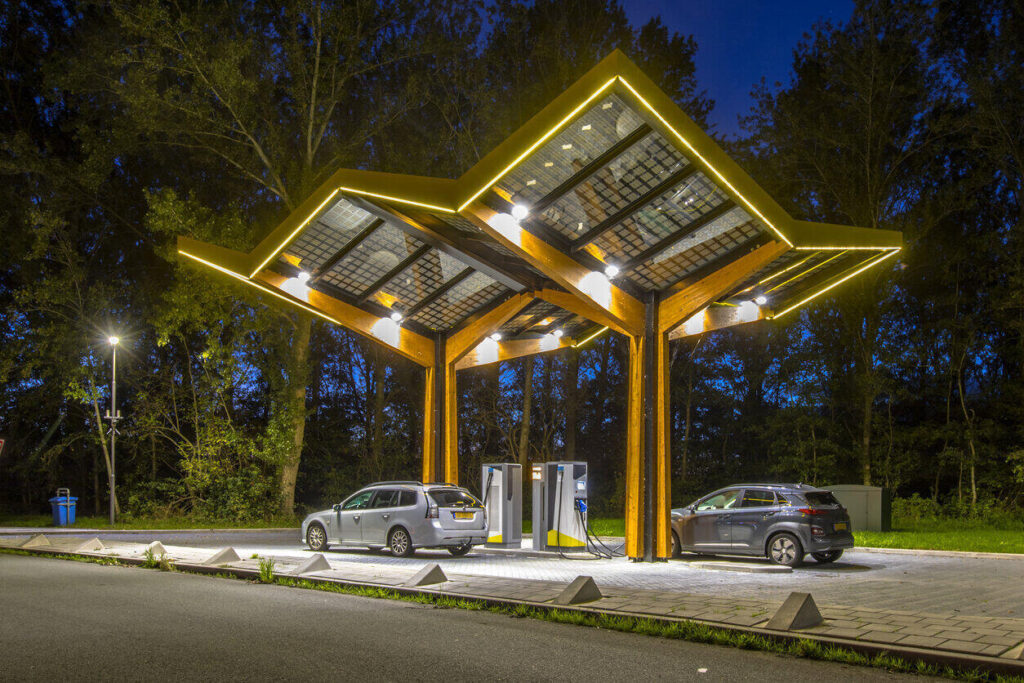
Charging Points
Access to charging infrastructure is crucial for E-Camper owners. You’ll need to plan your routes and camping destinations based on the availability of charging stations. Check online resources and apps like PlugShare to locate charging points along your intended routes. Consider investing in portable charging equipment for added flexibility when camping off-grid.
Before purchasing an E-Camper, it’s essential to carefully research and consider these factors to ensure it meets your camping and travel requirements and aligns with your budget and sustainability goals.
Advantages of electric campervans over traditional ones
When comparing electric campervans to their traditional counterparts, there are several clear advantages that make them an appealing choice for both eco-conscious travelers and those seeking enhanced comfort and convenience. One prominent advantage is the
significant reduction in carbon footprint achieved through zero emissions. By solely relying on electricity as a power source, electric campervans eliminate harmful greenhouse gas emissions that contribute to air pollution and climate change.
offer quieter operation and reduced noise pollution compared to their combustion engine counterparts. The absence of rumbling engines means that both occupants inside the vehicle and surrounding communities can enjoy peaceful camping experiences without disruptive noise levels.
This quieter operation allows nature enthusiasts to better connect with their surroundings while respecting wildlife habitats. Furthermore, electric campervans tend to have lower maintenance costs compared to traditional models.
Fewer moving parts in an electric motor compared to an internal combustion engine, there is less chance for mechanical failure or wear-and-tear issues like oil changes or spark plug replacements. This not only saves money for campervan owners but also reduces the time and hassle spent on maintenance, allowing for more time to be dedicated to exploring new destinations.
How Electric Campervans Contribute to Sustainable Tourism
Electric campervans offer a sustainable alternative for travelers looking to explore and enjoy nature while minimizing their environmental impact. These vehicles are powered by electricity, which significantly reduces greenhouse gas emissions compared to traditional diesel or petrol-powered campervans.
By opting for electric campervans, tourists can contribute to sustainable tourism by reducing air pollution and noise levels in natural areas. Additionally, electric campervans can be charged using renewable energy sources such as solar or wind power, further decreasing their carbon footprint.
This allows campers to enjoy off-grid adventures without the need for fossil fuels, making their travel experience more eco-friendly. Furthermore, electric campervans typically have energy-efficient features like LED lighting and low-energy appliances, promoting resource conservation.
Overall, the use of electric campervans in sustainable tourism offers a socially responsible and environmentally friendly way to travel and explore the world around us.

Trends in Eco-Friendly Camping
In recent years, there has been a significant increase in popularity for eco-friendly camping. With the growing concerns about climate change and the negative impact of traditional camping practices on the environment, more and more people are seeking sustainable alternatives.
One of the major trends in eco-friendly camping is using renewable energy sources for power generation. Solar panels and wind turbines are being increasingly used to power campsite amenities such as lighting, refrigeration, and charging stations, reducing the reliance on fossil fuels and minimizing carbon emissions.
Another emerging trend is the use of eco-friendly camping gear and equipment. Campers are now opting for biodegradable and sustainable materials for tents, sleeping bags, and other camping essentials. Additionally, there is a greater emphasis on Leave No Trace principles, which promote minimal impact camping and encourage campers to leave the campsite as they found it.
These trends reflect a growing awareness and commitment to preserve the environment while enjoying the great outdoors.
The Environmental Benefits of Going Electric
There are numerous environmental benefits to choosing electric vehicles (EVs) over traditional gasoline-powered cars. First and foremost, EVs produce zero tailpipe emissions, reducing air pollution and improving air quality.
This directly contributes to lower levels of harmful pollutants, such as nitrogen oxides and particulate matter, which can have detrimental effects on human health and the environment. Moreover, by choosing to go electric, we can also significantly reduce our carbon footprint.
EVs emit fewer greenhouse gases compared to their gasoline counterparts, as they have no exhaust emissions. In addition, by transitioning to electric transportation, we can reduce our dependence on fossil fuels and mitigate the adverse impacts associated with extracting and burning them.
This helps combat climate change and promotes the use of renewable energy sources. Lastly, electric vehicles also offer the potential for quieter roads, as they have less noise pollution compared to traditional cars with internal combustion engines. Overall, embracing electric vehicles can play a crucial role in achieving a greener and more sustainable future.

Cost Savings in the Long Run.
Investing in cost savings measures in the long run can reap significant benefits for businesses. One of the key advantages of implementing cost savings strategies is the potential for increased efficiency. By streamlining operations and eliminating unnecessary expenses, businesses can reduce overhead costs and boost productivity.
For example, utilizing automated technologies can cut down on labor costs and free up employees to focus on more strategic tasks. Moreover, cost savings measures can also lead to improved profitability. By minimizing expenses, businesses can increase their profit margins and allocate funds toward growth and expansion initiatives.
Additionally, implementing sustainable practices can have long-term cost benefits. For instance, adopting energy-efficient technologies can result in reduced utility bills over time.
Overall, while it may require initial investment, prioritizing cost savings in the long run can yield significant financial rewards and help businesses thrive in today’s competitive market.

Reduced Carbon Footprint .
Reducing our carbon footprint has become increasingly important as the effects of climate change become more evident. A carbon footprint refers to the amount of greenhouse gases, specifically carbon dioxide, emitted as a result of human activities. By reducing our carbon footprint, we can minimize our contribution to global warming and its detrimental effects on the environment.
There are several ways to achieve this, starting with energy conservation and efficiency. This can be accomplished by adopting renewable energy sources, such as solar or wind power, and optimizing the energy usage of our homes and businesses.
Transportation is another major contributor to carbon emissions, so using public transportation, carpooling, or electric vehicles can greatly reduce our carbon footprint. Additionally, adopting sustainable practices like recycling and composting can help minimize the amount of waste that goes to landfills, preventing the release of methane, a potent greenhouse gas.
Overall, making conscious choices to reduce our carbon footprint is not only beneficial for the environment, but also helps to create a more sustainable future for generations to come.
Quieter and Smoother Ride.
The experience of a quieter and smoother ride is a significant factor that many drivers prioritize when choosing a vehicle.
A quieter ride ensures a more comfortable driving experience by minimizing external noises, leading to reduced fatigue and increased overall satisfaction. Moreover, a smoother ride enhances the overall driving experience by providing better control and stability. It eliminates bumps and vibrations, creating a more refined and enjoyable journey for both the driver and passengers.
A vehicle with advanced suspension systems and noise-insulating materials offers excellent noise reduction and vibration isolation, resulting in a serene and tranquil ride. Additionally, smoother rides contribute to better fuel efficiency as they minimize unnecessary energy loss due to rough terrains or inadequate shock absorption.
Therefore, manufacturers constantly innovate and invest in technologies that provide a quieter and smoother ride to enhance the driving experience and meet customer expectations.
Disadvantages of Electric Campervan
One of the main disadvantages of using an electric campervan is the limited range of the vehicle. Electric campervans have a shorter driving range compared to traditional fossil fuel-powered campervans.
This can restrict the distance and routes that can be covered during a trip. Furthermore, finding charging stations for electric campervans is not as convenient or readily available as fuel stations, which can be a major inconvenience for campers on long journeys. Another disadvantage is the longer time it takes to charge the vehicle compared to refueling with gasoline or diesel
Charging a campervan can take several hours, which may not be ideal for those who want to be on the move quickly. Additionally, the initial cost of purchasing an electric campervan is often higher than traditional campervans due to the expensive battery technology.
Overall, while electric campervans are more environmentally friendly and have lower running costs, the aforementioned disadvantages can make them less practical for certain camping scenarios.
Buying used Fleet E-Vans
Like any purchase of a van from a dealer or private person ex fleet vehicles can have been driven hard and misused ,obviously there are exceptions but buyer beware and I would advise a real thorough inspection especially all parts related to battery and starter use this can be checked at a main dealer .
Tip:
Speaking to Mercedes dealer recently we mentioned there were considerable amount of Sprinter E-Vans on the road for a very well known deliver firm of products to your door , he mentioned the drivers were mistreating the way they stopped and pulled away causing battery and starter problems.
Planning Your Electric Campervan Adventure
Your Adventure begins with choosing the right vehicle. Consider the size and type of campervan that suits your needs. Next, determine the range you need to cover on each trip to ensure that your selected electric campervan has enough battery capacity.
Research charging options and plan your routes accordingly, ensuring that you have access to charging stations along the way. It is also important to check the availability of vehicle-specific charging adapters or cables. Create a detailed itinerary, listing all the attractions and campsites you wish to visit and the distance between them.
Take into account the time required for charging and factor it into your daily schedule. Pack essential supplies such as power cables, adapters, a tool kit, and extra batteries for any emergency situations. Lastly, familiarize yourself with the operation of the electric campervan, including its charging process and any specific maintenance requirements.
With careful planning and preparation, your electric campervan adventure is sure to be a thrilling and environmentally-friendly experience.
Choosing the Right E-Campervan for Your Needs.
Choosing the right campervan for your needs is essential to ensure a comfortable and enjoyable camping experience. First and foremost, consider the size and layout of the campervan. If you are traveling alone or with a partner, a smaller campervan might be sufficient.
However, if you are traveling with family or friends, you will need a larger campervan with enough sleeping and seating space for everyone. Additionally, think about the amenities and facilities you require. Do you need a fully equipped kitchen with a stove and fridge? Would you like a bathroom with a shower and toilet?
These factors will determine the level of comfort and convenience during your trip. Another crucial aspect is the budget. Campervan rentals vary significantly in price, so it is important to set a budget and stick to it.
Lastly, consider the duration of your trip. If you are planning a long journey, ensure that the campervan has enough storage space for your belongings. Overall, taking these factors into account will help you make the right choice and have a memorable camping experience.

Thinking of Switching to Electric?
There are several factors to consider when deciding to switch to an electric vehicle. One important factor is the availability and accessibility of charging infrastructure. Although the charging network is rapidly expanding, it may still be limited in certain areas.
Hence, it is crucial to ensure that you have convenient access to charging stations, either at home or at work. Another consideration is your driving needs. Electric vehicles are perfect for daily commutes and short trips, but they may not be the best option for long-distance travel due to limited charging time and range anxiety. Additionally, the upfront cost is often higher for electric vehicles compared to their gasoline counterparts.
However, the long-term savings on fuel and maintenance costs can offset this initial expense. Finally, the environmental impact should also be taken into account. Electric vehicles produce zero tailpipe emissions, helping to reduce air pollution and greenhouse gas emissions.
Overall, if you have access to a reliable charging infrastructure, drive mainly short distances, and are invested in reducing your carbon footprint, switching to an electric vehicle can be a beneficial choice.
Types of E-Vans Available
New
New electric campervans are gaining popularity among outdoor enthusiasts and eco-conscious travelers. These innovative vehicles offer a combination of convenience and sustainability. Campervans equipped with electric engines provide a quiet and smooth ride, making them an excellent choice for exploring nature without disturbing the peace.
Additionally, they produce zero emissions, reducing the carbon footprint of campers. With improved battery technology, electric campervans now offer longer ranges and faster charging times, providing more flexibility for long journeys. Some models even feature solar panels on the roof, allowing campers to recharge the batteries using clean, renewable energy. Furthermore, electric campervans are equipped with modern technology and amenities, ensuring a comfortable and enjoyable experience on the road.
From compact to spacious designs, there is a wide range of electric campervans available to suit different travel preferences. As more people embrace sustainable living and seek ways to reduce their environmental impact, the popularity of new electric campervans is poised to grow.
Retrofit
Retrofitting existing vans has become increasingly popular in recent years. With the rise of remote working, many individuals and businesses are seeking more flexible ways to travel and work. Retrofitting a van allows for the customization of the interior to suit specific needs and preferences.
This can include adding features such as a mobile office space, sleeping areas, kitchen facilities, and storage compartments. By converting an existing van, individuals can create a personalized workspace on wheels that allows them to work and travel at the same time. In addition, retrofitting can be a cost-effective alternative to purchasing a new vehicle that is already equipped with the desired features.
It also provides the opportunity to repurpose and give new life to an old van. Overall, retrofitting existing vans offers a practical solution for those looking for mobility, flexibility, and convenience in their work or travel arrangements.
Vehicles Suitable for Retrofit .
There are several types of vehicles that are suitable for retrofitting. One common type is passenger cars, including sedans, hatchbacks, and SUVs. These vehicles are popular among consumers and can easily accommodate retrofitting technologies such as electric motors and batteries. and with the growing trends more companies will offer van and motorhome retrofits .
Another type of vehicle that can be retrofitted is trucks. Trucks are widely used for transporting goods and have a high potential for reducing emissions and fuel consumption through retrofitting.
Additionally, buses are another suitable category for retrofitting. As public transportation plays a key role in reducing traffic congestion and air pollution, retrofitting buses with cleaner technologies can have a significant impact on overall emissions reduction. Finally, motorcycles and scooters can also be retrofitted with electric motors, leading to more sustainable and environmentally-friendly modes of transportation.
In conclusion, a wide range of vehicles, including passenger cars, suv’s vans, trucks, buses, and motorcycles, can be retrofitted with cleaner technologies and contribute to a greener transportation future.

Fully electric campervans
Fully electric campervans, also known as pure electric campervans, are powered solely by electricity and do not rely on any traditional fuel systems. They are equipped with a high-capacity battery pack that stores electrical energy for the vehicle’s operation. One crucial consideration when choosing a fully electric campervan is the battery capacity and range.
The battery capacity determines how much energy can be stored, while the range refers to the distance the vehicle can travel on a single charge. When evaluating battery capacity, it is vital to consider your specific needs and travel requirements.
Larger batteries with higher capacities generally provide longer ranges but may come at a higher cost. Battery capacity is measured in kilowatt-hours (kWh), and popular fully electric campervans typically have capacities ranging from 60 kWh to 100 kWh or more.
Another important factor associated with fully electric campervans is charging infrastructure requirements. As these vehicles rely entirely on electricity, access to reliable charging stations becomes crucial for long-distance travel or extended trips.
It’s essential to research available charging networks in your desired travel regions and ensure compatibility with your campervan’s charging specifications. Additionally, considering portable chargers or solar power integration can provide additional flexibility when accessing charging infrastructure may be limited.
Hybrid campervans
Hybrid campervans offer a combination of both electric and traditional fuel systems, providing enhanced versatility for various driving conditions and travel needs. These vehicles typically feature both an internal combustion engine (ICE) and an electric motor that work together seamlessly to provide power. The hybrid system intelligently switches between different power sources based on factors like speed, load demand, and battery charge level.
One significant benefit of hybrid technology in campervan applications is improved fuel efficiency compared to traditional gasoline or diesel engines alone. By utilizing the electric motor during low-speed or city driving, hybrid campervans can significantly reduce fuel consumption and emissions.
This is especially advantageous for campervan enthusiasts seeking a balance between environmental sustainability and practicality. Moreover, hybrid campervans offer increased range and flexibility by relying on traditional fuel systems when electric charging infrastructure may be limited.
This allows travelers to embark on longer journeys without being restricted by the availability of charging stations. The combination of both power sources ensures that hybrid campervan owners can enjoy the benefits of electric propulsion while maintaining peace of mind when it comes to long-distance travel and access to fuel stations.
Retrofitting Existing Vans.
Retrofitting existing vans has become increasingly popular in recent years. With the rise of remote working, many individuals and businesses are seeking more flexible ways to travel and work. Retrofitting a van allows for the customization of the interior to suit specific needs and preferences.
This can include adding features such as a mobile office space, sleeping areas, kitchen facilities, and storage compartments. By converting an existing van, individuals can create a personalized workspace on wheels that allows them to work and travel at the same time. In addition, retrofitting can be a cost-effective alternative to purchasing a new vehicle that is already equipped with the desired features.
It also provides the opportunity to repurpose and give new life to an old van. Overall, retrofitting existing vans offers a practical solution for those looking for mobility, flexibility, and convenience in their work or travel arrangements.
Other Considerations of E-Campervans
Mapping Out Charging Stations Today.
Electric vehicles (EVs) are becoming increasingly popular, and as a result, the demand for charging stations is growing. To accommodate this demand and to ensure a smooth transition to electric mobility, it is essential to have a comprehensive map of charging stations.
Mapping out charging stations allows EV drivers to plan their routes and identify charging points along the way. It also helps in optimizing the placement of charging infrastructure by identifying gaps in coverage and areas of high demand. Efficient route planning enables EV drivers to navigate long distances with confidence, knowing they have access to charging stations whenever needed.
Additionally, mapping out charging stations facilitates the expansion of the charging network by providing valuable information to policymakers and investors. Understanding the distribution and availability of charging stations helps in making informed decisions about future infrastructure investments and ensuring that charging services are accessible to a wide range of EV owners.
Overall, mapping out charging stations is crucial for the successful adoption and widespread use of electric vehicles.
Packing Essentials for an Electric Road Trip .
When embarking on an electric road trip, it is crucial to pack the right essentials to ensure a smooth and enjoyable journey. Firstly, a portable electric charger is a must-have item to keep your vehicle charged along the way. Depending on the distance you plan to travel, it is advisable to carry an extra charging cable as a backup.
Additionally, a set of adapters is essential in case you encounter different electric outlets during your trip. Another key item to pack is a road map or a navigation system to guide you along the route and help you locate charging stations.
It is also important to have a basic toolkit with you, including a tire inflator, jumper cables, and a tire pressure gauge, in case of any emergencies on the road. Lastly, don’t forget to bring some entertainment options such as a portable DVD player or a book to keep you entertained during the journey.
By packing these essentials, you can ensure a stress-free and enjoyable electric road trip.
The Growing Popularity of Electric Vehicles.
This growing popularity of electric vehicles can be attributed to several factors. Firstly, there is a global concern regarding climate change and the need to reduce greenhouse gas emissions. Electric vehicles are seen as a sustainable alternative to traditional gasoline-powered cars, as they produce zero tailpipe emissions.
Additionally, the advancement in battery technology has made electric vehicles more practical and convenient for everyday use. With longer range capabilities and faster charging times, range anxiety is gradually becoming less of a concern for potential buyers. Furthermore, the increasing availability of charging infrastructure is making it easier for electric vehicle owners to recharge their vehicles while on the go.
Governments around the world are also providing incentives such as tax credits and subsidies to encourage the adoption of electric vehicles. With all these factors combined, it is no surprise that the popularity of electric vehicles is on the rise, as more and more people recognize their environmental and economic benefits.
How Electric Campervans Fit into the EV Landscape.
Electric campervans are an exciting addition to the ever-expanding electric vehicle (EV) landscape. Campervans and RVs are popular among adventure enthusiasts and road trippers, offering a self-contained and mobile living space. With the advancement of EV technology, campervans can now be powered purely by electricity, reducing reliance on fossil fuels and decreasing the carbon footprint.
The adoption of electric campervans contributes to the overall goal of transitioning to a greener transportation system. Electric campervans also offer the convenience of charging on the go, as many campsites and RV parks now provide electric hook-ups. Furthermore, with the range of electric vehicles continually improving, campervan owners can now explore further afield without worrying about running out of battery power.
As more and more EV charging stations are installed across the country, the infrastructure to support electric campervans is becoming readily available, making them a viable and sustainable option for eco-conscious travelers.
With their unique blend of freedom and eco-friendliness, electric campervans are set to become a popular choice for those who seek adventure while prioritizing the environment.
Phasing out Diesel and Petrol .
Phasing out diesel and petrol vehicles has become a global trend in recent years as countries strive to reduce greenhouse gas emissions and combat climate change.
Various countries have implemented strict policies and set deadlines to completely ban the sale of new diesel and petrol cars. Norway, for instance, plans to prohibit the sale of new fossil fuel-powered vehicles by 2025. Similarly, the United Kingdom aims to ban the sale of new petrol and diesel cars by 2030.
Other countries have taken a more gradual approach, with France and Germany planning to phase out petrol and diesel cars by 2040 and 2030 respectively. These measures are being accompanied by incentives to promote the adoption of electric vehicles, such as subsidies and infrastructure development.
While there are concerns about the feasibility and economic implications of such transitions, phasing out diesel and petrol is seen as a crucial step towards a greener and sustainable future for the planet.
Warranties and After Sales
When buying an electric campervan, there are several important considerations to keep in mind. Firstly, it is crucial to consider the range and battery capacity of the vehicle. This will determine how far you can travel on a single charge and how long it will take to recharge the battery. It is also important to consider the charging infrastructure available, as this will vary depending on your location.
Some areas may have a well-developed network of charging stations, while others may have limited options. Additionally, consider the size and layout of the campervan to ensure it meets your needs and preferences. The availability of amenities and storage space should also be considered.
Furthermore, look into the warranty and after-sales support offered by the manufacturer, as this can provide peace of mind and assistance if any issues arise. Finally, take into account the overall cost, including the purchase price, ongoing maintenance, and potential incentives or rebates that may be available for electric vehicles.
By carefully considering these factors, you can make an informed decision when purchasing an electric campervan.
Electric vs Gas or Diesel.
As the world shifts towards more sustainable transportation options, the debate between electric vans and gas or diesel vans gains momentum. Electric vans are gaining popularity due to their environmental benefits and reduced operating costs.
They produce zero emissions, improving air quality and reducing noise pollution in urban areas. Additionally, electric vans have lower maintenance costs as they have fewer moving parts and require less frequent servicing. On the other hand, gas or diesel vans have a longer driving range and faster refueling times, making them more suitable for long-distance or time-sensitive deliveries.
They also have a well-established refueling infrastructure, making them more convenient for businesses that rely heavily on vans.
However, they contribute to air pollution and are subject to fluctuating fuel prices. While electric vans are still developing their technology and infrastructure, they are showing great potential in providing sustainable and cost-effective alternatives for van operators, especially in urban areas where air quality is a concern.
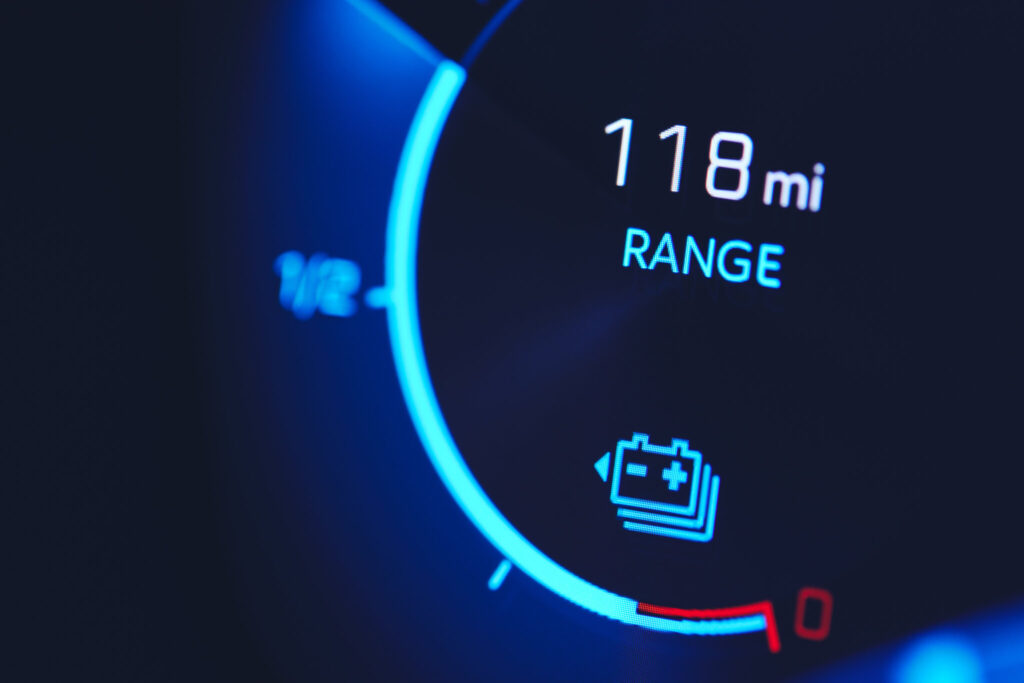
Range Anxiety and Charging Infrastructure Range.
Anxiety refers to the fear or concern that electric vehicle (EV) owners have regarding the limited driving range of their vehicles and the potential for running out of battery power.
This anxiety can be attributed to the lack of adequate charging infrastructure, which refers to the availability and accessibility of charging facilities for EVs. Without a widespread and efficient network of charging stations, EV owners are compelled to constantly monitor their battery levels and plan their trips around charging locations.
Furthermore, the lack of fast charging options and long charging times can exacerbate range anxiety. To alleviate this anxiety and promote widespread adoption of EVs, it is crucial to invest in the development of a robust charging infrastructure.
This includes installing more public charging stations in convenient locations, such as parking lots, shopping centers, and highway rest areas. Additionally, technological advancements in fast charging and the implementation of smart charging strategies can enhance the charging experience and reduce range anxiety.
By ensuring a reliable and convenient charging network, we can address range anxiety, encourage more people to switch to EVs, and contribute to a greener and sustainable transportation system.
Initial Investment and Financing Options
This refers to the capital required to start a business or a project. This investment includes the cost of purchasing assets, such as equipment and inventory, as well as other expenses such as marketing and licensing fees.
Financing options for the initial investment can vary depending on the size and nature of the business. One common financing option is using personal savings or assets to fund the startup costs. This allows the business owner to have complete control over the business and avoids the need to repay any loans or incur interest charges. Another option is to seek external financing from banks or other financial institutions.
This may involve obtaining a loan or securing investment from venture capitalists or angel investors. However, external financing options often come with the requirement of collateral or an equity stake in the business. Careful consideration is required when evaluating financing options to ensure that it aligns with the business’s financial goals and capabilities.
Cost of Purchase and Conversion .
This refers to the expenses incurred when buying a product or service and subsequently modifying it to meet specific needs or preferences.
These costs can vary greatly depending on the nature of the purchase and the extent of the conversion required. For example, when purchasing a car, the cost of purchase would include the actual price paid for the vehicle, while the cost of conversion could include any modifications made to the car such as installing new audio equipment or upgrading the engine.
Similarly, when buying a software program, the cost of purchase would cover the purchase price, while the cost of conversion may involve customizing the software to integrate it with existing systems or adding additional functionalities.
It is important for individuals and businesses to consider both the cost of purchase and conversion when making purchasing decisions in order to accurately assess the overall expenses involved.
Legal Requirements:
MOT and Road Tax In the UK, it is a legal requirement for all vehicles aged three years or older to undergo an annual MOT test.
The MOT, which stands for Ministry of Transport, is designed to ensure that vehicles meet certain safety and environmental standards. During the test, various components of the vehicle are thoroughly examined, including the brakes, lights, suspension, and exhaust system. If the vehicle fails the MOT, it is deemed unroadworthy and must be repaired and retested before it can be driven legally again.
Additionally, all vehicles on the road in the UK must have valid road tax. Road tax, also known as vehicle excise duty, is a tax that is paid annually to the government and allows vehicles to be used on public roads.
Failure to have a valid MOT or pay road tax can result in fines, penalty points on your license, and even the confiscation of your vehicle. Therefore, it is essential to ensure that your vehicle is in compliance with these legal requirements to avoid any legal trouble.
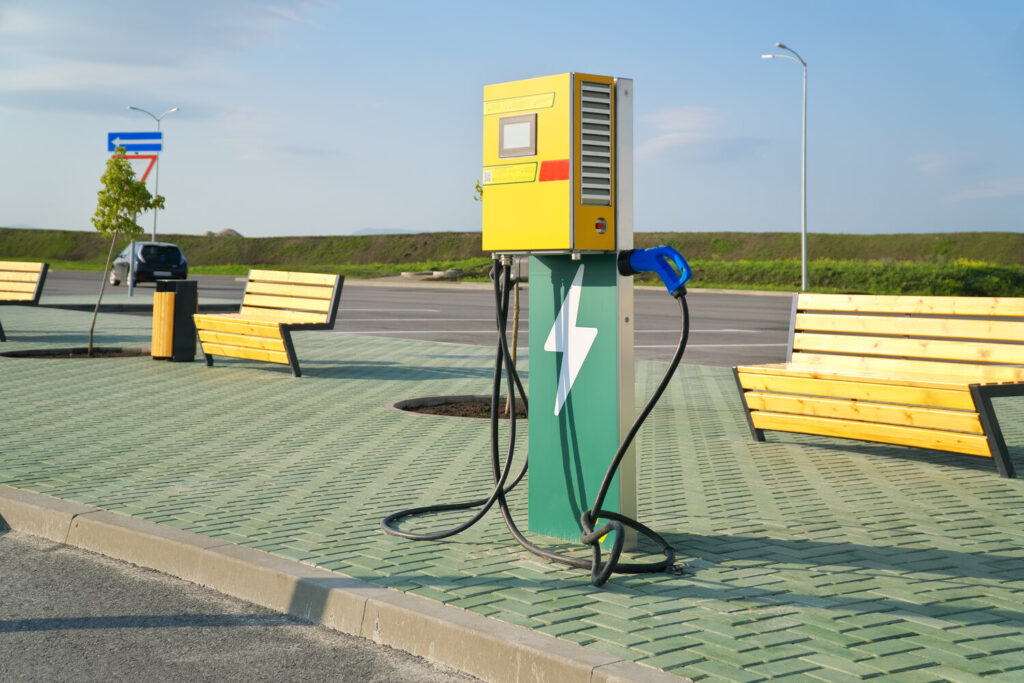
Dealing with Low Battery and Charging .
In today’s world, where smartphones and other electronic devices have become an integral part of our lives, dealing with low battery can be quite frustrating. We rely on our phones for communication, social media, entertainment, and so much more. When we see that dreaded low battery notification, panic can quickly set in.
However, there are several ways to effectively deal with low battery and ensure that our devices stay charged. First and foremost, carrying a portable charger or power bank can be a lifesaver. These small, portable devices can provide an extra boost of battery power when needed.
Additionally, adjusting the settings on our devices to optimize battery life can be extremely beneficial. Turning on battery saver mode, reducing screen brightness, and disabling unnecessary notifications are a few simple ways to conserve battery.
Finally, it’s important to establish a charging routine. Regularly charging our devices, preferably overnight, can help ensure that we never run out of battery during the day. By implementing these strategies, we can effectively deal with low battery and keep our devices juiced up and ready to go.
Recharging Options and Costs
When it comes to recharging options for electronic devices, there are several choices available in the market today. The most common method is using a wall socket to charge devices through the provided charging cable.
This option is convenient as it is easily accessible in most places. Another popular option is using a portable power bank, which allows users to charge their devices on the go without the need for a wall socket. Power banks come in various sizes and capacities, providing different levels of charging capabilities.
Additionally, wireless charging is gaining popularity, where devices can be charged by simply placing them on a charging pad. However, it is important to note that each recharging method also comes with its own costs. While wall socket charging does not incur any additional costs other than the electricity bill, purchasing power banks and wireless charging pads can add to the overall expenses.
Therefore, users should weigh the convenience and cost factors before deciding on the most suitable recharging option for their devices.
Where to Buy Electric Campervans
If you’re considering purchasing an electric campervan, you have a few options for where to buy one. One option is to visit an authorized dealer.
These dealers specialize in electric vehicles and can provide you with expert advice and guidance on choosing the right campervan for your needs. They often have a wide selection of electric campervans available for you to test drive and compare. Another option is to purchase directly from the manufacturer.
Many electric campervan manufacturers have their own online stores where you can browse their inventory and make a purchase. This can be a convenient option if you already know which brand or model you want.
Lastly, you can also check out online marketplaces. Websites like eBay or Craigslist often have listings for electric campervans from both dealers and individual sellers. It’s important to do your research and thoroughly inspect the vehicle before making a purchase from a private seller.
Essential Accessories for Electric Campervans
An electric campervan adventure is incomplete without the right accessories. To ensure a smooth and enjoyable trip, here are three must-have accessories:
1. High-Capacity Power Bank or Portable Generator: A high-capacity power bank or portable generator is essential for keeping your van’s electrical systems running smoothly, even when you’re off-grid. This ensures you have power for lights, appliances, and other devices.
2. Solar Panels: Solar panels provide an eco-friendly way to recharge your batteries during daylight hours. There are various models designed specifically for campervans and RVs available online. By harnessing the power of the sun, you can extend your off-grid adventures.
3. Mobile Wi-Fi Hotspot and Signal Booster: Staying connected is important, even when you’re on the road. Investing in a mobile Wi-Fi hotspot and signal booster ensures you have reliable internet access wherever you go. Stay connected with loved ones, work remotely, or enjoy entertainment while you travel by investing in a mobile Wi-Fi hotspot and signal booster for reliable internet access.
For added comfort during your electric campervan adventure, consider investing in a high-quality mattress. A good night’s sleep is essential for enjoying your travels to the fullest.
Lastly, don’t forget about safety essentials. Fire extinguishers and carbon monoxide detectors are crucial accessories that could save lives in case of emergencies.
With these must-have accessories ready, any trip with an electric campervan becomes easier. Stay tuned as we delve into maintenance tips in our next blog post.
Buying an Electric Campervan.
An electric campervan can be a great investment for those who enjoy camping and value sustainability. Electric campervans offer the advantage of being eco-friendly, emitting zero carbon emissions while on the road.
This not only helps to reduce our carbon footprint but also allows campers to enjoy nature without polluting it. In addition, electric campervans are usually quieter than their traditional counterparts, providing a more peaceful camping experience.
They are also cheaper to run, as electricity costs less than fuel, and require less maintenance as they have fewer moving parts. Furthermore, with the advancements in technology, the range and charging time of electric campervans have significantly improved, making them more practical for long trips.
However, it is important to consider the availability of charging stations, as they are still limited in some areas. Overall, buying an electric campervan can provide a more sustainable and cost-effective way of enjoying the outdoors while reducing our impact on the environment.
Are Electric Campervans Ready for Van Life?
Electric campervans offer a promising alternative for van life enthusiasts seeking a more sustainable and eco-friendly option. With the growing concern for climate change and the increasing popularity of van life, electric campervans are becoming more widespread. However, they still have a long way to go before they can fully meet the needs of van lifers. One of the main challenges is the limited range of electric campervans compared to their traditional counterparts.
While some electric campervans can travel a decent distance on a single charge, the availability of charging infrastructure is not yet widespread enough to support long journeys without restrictions. This can limit the freedom and flexibility that van life affords. Additionally, the charging time for electric campervans is considerably longer than refilling a tank of gas, which can be an inconvenience when on the road.
Despite these challenges, advancements in electric vehicle technology are continuously being made, and it’s only a matter of time before electric campervans become more suitable for van life.
Exploring in an Electric Campervan
Exploring in an electric campervan adds a thrilling new dimension to travel. With its eco-friendly nature and silent engine, this mode of transport allows you to truly connect with nature. The freedom to drive wherever you desire, unrestricted by the need for gasoline, provides a sense of liberation and adventure.
As you make your way through winding roads and scenic landscapes, you can relish in the serenity of the journey. The absence of noise pollution allows for a more immersive experience, as you can fully appreciate the natural surroundings. Moreover, an electric campervan enables you to explore remote locations that may not be easily accessible with traditional vehicles.
This opens up a whole new world of possibilities for discovering hidden gems off the beaten path. Whether it’s national parks, picturesque coastal towns, or breathtaking mountain ranges, an electric campervan allows you to immerse yourself in the beauty of the great outdoors while minimizing your carbon footprint.

Maintenance for Your Electric Campervan
Keeping your electric campervan in great shape is essential for a smooth and safe journey. Here’s what you need to know in a simplified format:
Battery Health:
- Regularly check your battery to ensure it performs at its best.
- A healthy battery means better driving range, so take good care of it.
Tire Pressure:
- Maintain the right tire pressure.
- Proper inflation saves energy and extends battery life.
Cleanliness Matters:
- Keep your campervan clean.
- A clean exterior reduces drag and boosts overall efficiency.
- Tidy up the interior to ensure everything runs smoothly.
Understanding Electric Vehicle Safety
Electric vehicles (EVs) are becoming more common, but safety is crucial. Here’s what you should know:
Battery Safety:
- EVs use high-voltage lithium-ion batteries, which must be handled carefully.
- Manufacturers reinforce battery enclosures and use cooling systems to prevent overheating.
Safety Features:
- EVs come with safety tech like advanced driver-assistance systems (ADAS) and collision avoidance.
- Lower center of gravity makes EVs less prone to rollovers.
Ongoing Challenges:
- Challenges remain, like battery recycling and charging infrastructure.
- Continuous research is essential for EV safety.
Maintenance Costs for Electric Campervans
Electric campervans have advantages when it comes to maintenance costs:
Lower Maintenance:
- Electric campervans have fewer parts to wear out compared to traditional ones.
- Save on expenses like oil changes and engine tune-ups.
Regenerative Braking:
- Regenerative braking systems extend brake pad life.
- Fewer complex systems mean fewer visits to the mechanic.
Battery Replacement:
- While overall maintenance costs are lower, replacing the battery can be expensive.
Know Your Campervan’s Systems
Understanding your campervan’s electrical systems can help you detect and prevent issues.
Spare Parts:
- Keep spare electric vehicle components, like fuses or light bulbs, on hand for emergencies.
Professional Services:
- If you’re not comfortable with DIY maintenance, professional services are available for EVs.
Maintenance and Repairs
Maintaining and repairing your campervan is crucial for optimal performance. Regular maintenance involves tasks like cleaning, lubricating, adjusting, and inspecting components to ensure smooth operation. Prompt repairs are essential to address issues and restore your campervan to working order. Attention to detail and adherence to guidelines are key principles in both maintenance and repairs. These practices extend the equipment’s lifespan, minimize costs by preventing major problems, and enhance overall efficiency.
Maintaining and repairing your campervan is vital for peak performance:
Leading Electric Campervan Manufacturers
Leading electric campervan manufacturers are driving the shift towards sustainable travel options. They blend traditional campervan comfort with eco-friendly electric power, pushing design and technology boundaries.
Key players like,
More info click here: Volkswagen
More info click here: Mercedes-Benz
More info click here Nissan have introduced electric campervans and are investing in R&D to enhance efficiency, range, and camping experiences. As demand for electric campervans rises, these manufacturers are poised to innovate and transform the market further.
More info click here: Mercedes eSprinter
When it comes to leading electric campervan manufacturers, one brand that stands out is Mercedes. Mercedes is known for producing high-quality and luxurious vehicles, and their electric campervan, known as the e van, is no exception.
The e van combines the comfort and style of a Mercedes vehicle with the eco-friendly benefits of an electric engine. With its sleek design and spacious interior, the e van offers a unique and enjoyable camping experience for travelers. Mercedes has also incorporated advanced technology into the e van, such as a state-of-the-art infotainment system and energy management system.
Additionally, the e van includes features such as solar panels, regenerative braking, and efficient LED lighting, all of which contribute to its overall sustainability. Overall, Mercedes has established itself as one of the leading electric campervan manufacturers, providing customers with a luxurious and environmentally-friendly option for their camping needs.
More info click here: Nissan e-NV200 Camper Van
The Nissan e-NV200 Camper Van is a compact yet practical electric campervan option. Based on the popular e-NV200 electric commercial vehicle platform, this camper van offers an efficient and eco-friendly solution for travelers seeking mobility in urban environments.
With its sleek design and clever use of space, it packs all the necessary amenities into a compact package. Inside the e-NV200 Camper Van, you’ll find a well-thought-out layout that maximizes every inch of available space.
It features a pop-up roof that provides extra headroom and can be converted into an additional sleeping area. The interior includes a compact kitchenette equipped with a stove, sink, refrigerator, and storage compartments for your culinary adventures on the road.
Despite its smaller size compared to some other models in the market, it still offers comfortable seating arrangements that can be transformed into a cozy sleeping area at night. The Nissan e-NV200 Camper Van proves that small can indeed be beautiful when it comes to electric campervans.
More info click here: Ford eTransit
One of the leading electric campervan manufacturers is Ford, which offers the highly efficient E van. Ford has been a prominent player in the automotive industry for many years, and they have also made their mark in the campervan market.
The E van combines the practicality and comfort of a campervan with the eco-friendly advantages of electric power. With its sleek design and cutting-edge technology, the E van by Ford is a popular choice among eco-conscious travelers. Ford has prioritized sustainability by using recycled and recyclable materials in the construction of the campervan. Additionally, the E van offers impressive range and charging capabilities, allowing users to explore while minimizing their carbon footprint.
With its reliable performance and commitment to sustainability, Ford has positioned itself as a leading electric campervan manufacturer, appealing to both adventure seekers and environmental enthusiasts alike.
More info click here: Ram Promaster BEV
When it comes to leading electric campervan manufacturers, one notable name in the industry is e van. Their Ram Promaster BEV is a popular choice among many campervan enthusiasts. This fully electric campervan offers a reliable and eco-friendly option for those looking to explore the great outdoors.
The e van Ram Promaster BEV boasts impressive features such as a spacious interior, comfortable sleeping arrangements, and modern amenities. With its electric motor, this campervan provides a smooth and quiet ride, while also reducing emissions and minimizing the impact on the environment. e van prioritizes sustainability and innovation, making them a top choice for individuals seeking a green and efficient campervan.
With the increasing demand for electric vehicles and the desire for eco-friendly travel solutions, e van is at the forefront of the electric campervan market, offering high-quality products that cater to the needs of both adventure seekers and nature enthusiasts.
More info click here: Volkswagen ID.Buzz
Drawing inspiration from the iconic VW Microbus of yesteryears, the Volkswagen ID.Buzz Electric Camper Van exudes nostalgia while embracing cutting-edge technology. This modern-day interpretation seamlessly combines retro aesthetics with sustainable mobility solutions. Boasting its sleek design and spacious interior, this electric camper van is perfect for those seeking both style and functionality.
The ID.Buzz Electric Camper Van offers ample space to accommodate up to seven individuals comfortably. Its modular seating arrangement allows for versatile configurations to suit different needs – whether it’s transporting friends or creating a cozy lounge area inside the van.
Equipped with state-of-the-art electric drivetrain technology and an impressive range, this camper van promises a smooth and eco-friendly ride. With its unique design elements paying homage to the beloved Microbus, such as the two-tone paint schemes and eye-catching round LED headlights, the Volkswagen ID.Buzz Electric Camper Van is truly a captivating blend of past and future.
More info click here: The Rivian EDV 700
is an electric van that is designed to be both functional and environmentally friendly. With a range of up to 300 miles on a single charge, this vehicle eliminates the need for frequent stops to refuel, making it a practical option for long distance travel.
The van is equipped with a spacious interior that can comfortably accommodate up to seven passengers or be configured for cargo storage. It also features innovative technology such as an advanced infotainment system and a suite of safety features to enhance the overall driving experience. One of the standout features of the Rivian EDV 700 is its rugged capability, with all-wheel drive and off-road capabilities.
This makes it a versatile option for those who need a dependable vehicle for both urban commuting and outdoor adventures. With its sleek design, impressive range, and versatility, the Rivian EDV 700 is set to revolutionize the electric van market, offering a sustainable and practical alternative to traditional gasoline-powered vans.
More info click here: Rivian R1T Adventure Van Conversion Kit
The Rivian R1T Adventure Van Conversion Kit has emerged as a true game-changer in the world of electric campervans. Designed by Rivian, an American electric vehicle startup, this conversion kit allows campers to transform their Rivian R1T electric pickup truck into a fully functional camper.
With its robust off-road capabilities and innovative features, this conversion kit offers a unique camping experience for adventure enthusiasts. The R1T Adventure Van Conversion Kit boasts impressive specifications and features.
It includes a spacious pop-up rooftop tent, complete with a comfortable sleeping area and panoramic windows to take in breathtaking views of nature. The kit also includes a kitchenette with a stove, sink, and storage compartments for all your cooking essentials.
Moreover, it features flexible seating arrangements that can be transformed into additional sleeping areas or lounges when needed. With its high-capacity battery pack offering an extended range and advanced power management system, the Rivian R1T Adventure Van Conversion Kit paves the way for sustainable exploration while ensuring comfort and convenience.
Electric Vans in Development
Electric vans are becoming increasingly popular as companies strive to reduce their carbon footprint and lower their overall operating costs. Many automakers and start-ups are now focusing on the development of electric vans to cater to the growing demand for eco-friendly and efficient delivery vehicles.
Electric vans offer numerous benefits over their traditional counterparts, including lower fuel costs, reduced emissions, and quieter operation. In addition, the improvement in battery technology allows electric vans to have a longer range, making them more practical for long-distance deliveries. Companies like Rivian, Arrival, and Mercedes-Benz have already unveiled their electric van models, which feature advanced technologies and a spacious cargo area.
These vans are designed to meet the specific needs of delivery services and are equipped with features like advanced connectivity, intelligent charging systems, and improved safety features. With the increasing emphasis on environmental sustainability, electric vans are set to revolutionize the delivery industry, providing a cleaner and more efficient mode of transportation for businesses around the world.
More info click here: Canoo Lifestyle Delivery Vehicle (LDV)
The Canoo Lifestyle Delivery Vehicle (LDV) is an innovative urban delivery vehicle that offers a flexible and sustainable solution for last-mile delivery services. With its electric powertrain and customizable interior space, this vehicle provides a practical and eco-friendly alternative to traditional delivery trucks.
The LDV features a compact design, making it easy to maneuver through congested city streets and navigate tight parking spaces. Its spacious cargo area can be configured to accommodate various types of goods, making it suitable for a wide range of delivery applications.
The vehicle also comes with advanced safety features, including automated emergency braking, forward collision warning, and blind spot monitoring, ensuring the safety of both the driver and pedestrians. Furthermore, the LDV is equipped with state-of-the-art connectivity options, allowing businesses to track and optimize their delivery operations in real-time.
Overall, the Canoo Lifestyle Delivery Vehicle is a revolutionary solution that combines sustainability, functionality, and cutting-edge technology to meet the evolving needs of urban delivery services.
More info click here: Bollinger Deliver-E
The Bollinger Deliver-E is an innovative electric delivery van that is set to revolutionize the way goods are transported in urban areas. With a sleek and durable design, this vehicle is perfect for navigating through tight city streets and making deliveries in congested areas.
The Deliver-E is equipped with a powerful electric motor that provides impressive acceleration and a long-range battery pack that allows for extensive driving without needing to be recharged. This eco-friendly van also boasts a spacious interior that can accommodate a substantial amount of cargo, making it ideal for commercial use.
Additionally, the Deliver-E features advanced technology such as regenerative braking and smart sensors that enhance safety and efficiency. With its impressive range, durability, and eco-friendly design, the Bollinger Deliver-E is poised to become the go-to electric delivery van for businesses in urban environments.
More info click here: Tesla Robovan
The Tesla Robovan is an innovative and futuristic vehicle developed by Tesla, known for their electric cars and cutting-edge technology. This unique concept aims to revolutionize the delivery and logistics industry by introducing an autonomous and electric van. The Robovan combines Tesla’s advanced self-driving capabilities with its renowned electric powertrain, creating a vehicle that is not only emission-free but also fully autonomous.
This means that the Robovan can navigate and drive itself to deliver goods and packages without the need for a human driver. Equipped with a spacious cargo area and state-of-the-art delivery technology, the Robovan has the capacity to transport a large quantity of items efficiently and safely.
With the increasing demand for sustainable transportation solutions and the rise of e-commerce, the Tesla Robovan presents itself as a game-changing innovation that has the potential to transform the way we think about last-mile delivery. By reducing dependence on fossil fuels and eliminating the need for human drivers, the Robovan could greatly contribute to reducing carbon emissions and enhancing operational efficiency in the delivery sector.
More info click here: Kia PBVs
Kia PBVs, also known as Purpose-Built Vehicles, are specialized vehicles designed to serve a specific purpose. These vehicles are built with a focus on meeting specific needs, whether it be for commercial or recreational purposes. One prime example of a Kia PBV is the Kia Soul EV, which is an electric vehicle designed for eco-conscious consumers.
This vehicle offers impressive electric range, quick charging capabilities, and a spacious interior, making it perfect for environmentally conscious individuals who need a reliable and efficient vehicle for their daily commute. Another popular Kia PBV is the Kia Sedona, a versatile minivan that offers ample space and comfort for families on the go.
With its flexible seating configurations and advanced safety features, the Sedona is a perfect choice for those who need a reliable and spacious vehicle for their growing family. Kia PBVs demonstrate the brand’s commitment to catering to the diverse needs of its customers and providing them with vehicles that are tailored to their specific requirements.
Electric Versions of Chevy Express / GMC Savana
Chevrolet and GMC have recently announced their plans to release electric versions of their popular vans, the Chevy Express and GMC Savana. This move aims to meet the growing demand for eco-friendly commercial vehicles and contribute to the transition towards a more sustainable transportation industry.
The electric versions of these vans are expected to feature advanced battery technology, offering an impressive range and efficient performance. Additionally, they will come equipped with modern connectivity and safety features to enhance the overall driving experience.
The introduction of electric versions of the Chevy Express and GMC Savana is a significant step forward in reducing greenhouse gas emissions in the commercial vehicle sector. This initiative not only offers businesses a greener option for their transportation needs but also helps to improve air quality and decrease dependence on fossil fuels. With Chevrolet and GMC’s reputation for quality and reliability, the electric Chevy Express and GMC Savana are sure to become popular choices among business owners looking to go electric.
Essential Accessories for Electric Campervans
An electric campervan adventure is incomplete without the right accessories. To ensure a smooth and enjoyable trip, here are three must-have accessories:
1. High-Capacity Power Bank or Portable Generator: A high-capacity power bank or portable generator is essential for keeping your van’s electrical systems running smoothly, even when you’re off-grid. This ensures you have power for lights, appliances, and other devices.
2. Solar Panels: Solar panels provide an eco-friendly way to recharge your batteries during daylight hours. There are various models designed specifically for campervans and RVs available online. By harnessing the power of the sun, you can extend your off-grid adventures.
3. Mobile Wi-Fi Hotspot and Signal Booster: Staying connected is important, even when you’re on the road. Investing in a mobile Wi-Fi hotspot and signal booster ensures you have reliable internet access wherever you go. Stay connected with loved ones, work remotely, or enjoy entertainment while you travel by investing in a mobile Wi-Fi hotspot and signal booster for reliable internet access.
For added comfort during your electric campervan adventure, consider investing in a high-quality mattress. A good night’s sleep is essential for enjoying your travels to the fullest.
Lastly, don’t forget about safety essentials. Fire extinguishers and carbon monoxide detectors are crucial accessories that could save lives in case of emergencies.
With these must-have accessories ready, any trip with an electric campervan becomes easier. Stay tuned as we delve into maintenance tips in our next blog post.
Frequently Asked Questions
Q: What are electric campervans?
A: Electric campervans, also known as electric camper vans or electric motorhomes, are recreational vehicles that are powered by electricity instead of traditional gasoline or diesel. These vehicles have a living space that is converted into a campervan, providing everything you need for a comfortable travel experience.
Q: Are there any all-electric campervans available?
A: Yes, there are all-electric campervans available in the market. Companies like Nissan, Mercedes, and VW offer electric camper van options for those looking to embrace the future of travel.
Q: What are the advantages of electric campervans?
A: Electric campervans have several advantages. They are environmentally-friendly, emitting zero emissions and reducing our carbon footprint. They are also quieter compared to traditional gasoline or diesel campervans. Additionally, electric campervans have lower running costs as electricity is generally cheaper than petrol or diesel. Their range is constantly improving with advancements in battery technology.
Q: Can I convert a regular campervan into an electric campervan?
A: Yes, it is possible to convert a regular campervan into an electric campervan through a camper conversion process. There are companies specializing in electric campervan conversions, allowing you to transform your existing vehicle into an all-electric camper.
Q: How do I recharge an electric campervan?
A: Electric campervans can be recharged using electric vehicle charging stations commonly found across the UK and other countries. There are also options for electric campervan owners to install EV chargers at their own homes or campsites. The charging time will vary depending on the charger’s power and the capacity of the campervan’s battery.
Q: What is the range of an electric campervan?
A: The range of an electric campervan depends on various factors including the size of the battery, driving conditions, and speed. Most modern electric campervans have a range of around 100-200 miles on a single charge, allowing for a decent amount of travel before needing to recharge.
Q: Are there any electric campervans available in the US market?
A: Yes, there are electric campervans available in the US market. Companies like Nissan, Mercedes, and Winnebago offer electric motorhomes and campervans for sale in the US.
Q: How is the market for electric campervans?
A: The market for electric campervans is still relatively new but growing rapidly. As more people are becoming conscious of their environmental impact and embracing electric vehicles, the demand for electric campervans is expected to increase. There is a range of electric campervans available, from compact electric vans to larger motorhomes.
Q: Are electric campervans more expensive than traditional campervans?
A: Electric campervans may have a higher upfront cost compared to traditional campervans due to the advanced technology and electric drivetrain. However, they have lower running costs in the long run, with reduced fuel expenses and potentially lower maintenance costs.
Q: Can electric campervans be used for long-distance travel?
A: Yes, electric campervans can be suitable for long-distance travel, but it depends on the specific model’s range. Many electric campervans offer ranges of 100-300 miles on a single charge, making them suitable for various road trips. However, planning your route to include charging stops and considering your power consumption is essential for a smooth long-distance journey.
Q: How long does it take to charge an electric campervan?
A: Charging times for electric campervans vary depending on the charger’s power and the vehicle’s battery capacity. Using a standard home charger may take 8-12 hours for a full charge, while fast-charging stations can provide a significant charge in 30 minutes to an hour. It’s crucial to research the charging infrastructure along your route for convenient stops.
Q:What is the cost difference between electric campervans and traditional ones?
A: Electric campervans tend to have a higher upfront cost than their traditional counterparts due to the cost of the battery and electric drivetrain technology. However, they can be more cost-effective in the long run due to lower fuel and maintenance expenses. The exact cost difference varies by brand and model.
Q: Can I charge my electric campervan with solar panels?
A: Yes, it’s possible to charge your electric campervan with solar panels. Many campervans can be equipped with solar panels on their roof, which can generate electricity to charge the vehicle’s battery. While this won’t fully replace grid charging, it can extend your range and reduce your reliance on external power sources, making it ideal for off-grid camping.
Q: Are there enough charging stations for electric campervans?
A: The availability of charging stations for electric campervans is growing steadily but can vary depending on your location. In well-developed regions and along popular travel routes, you’ll find an increasing number of charging options. However, in remote or less-developed areas, charging infrastructure may be limited. It’s crucial to plan your routes and research charging station locations in advance to ensure a smooth journey.
Conclusion
I hope you enjoyed this guide and has given you some thoughts to consider before buying an E van to convert yourself or go for a branded conversion .

